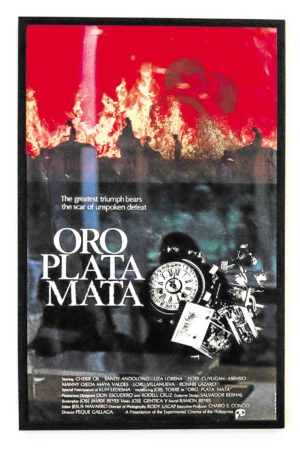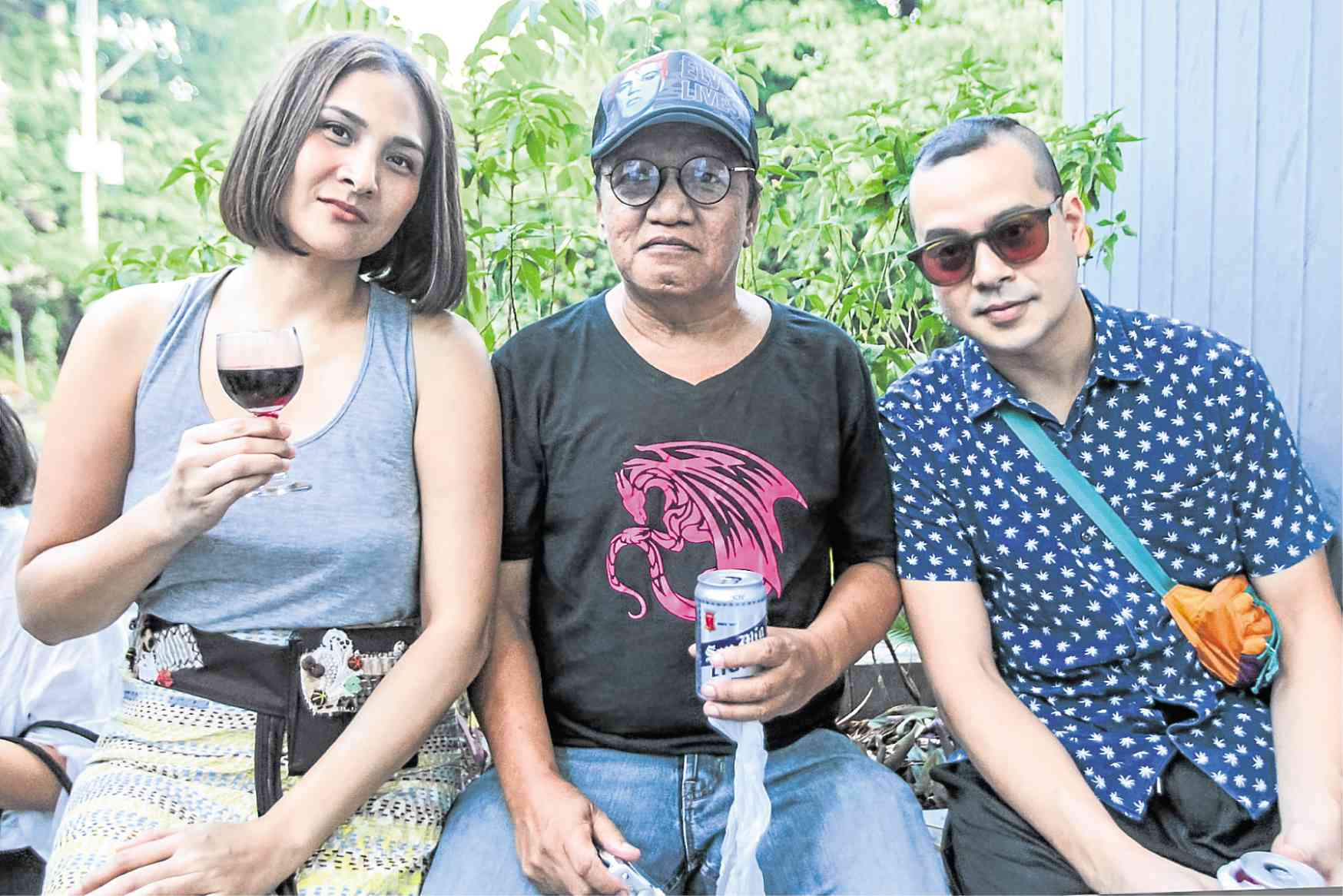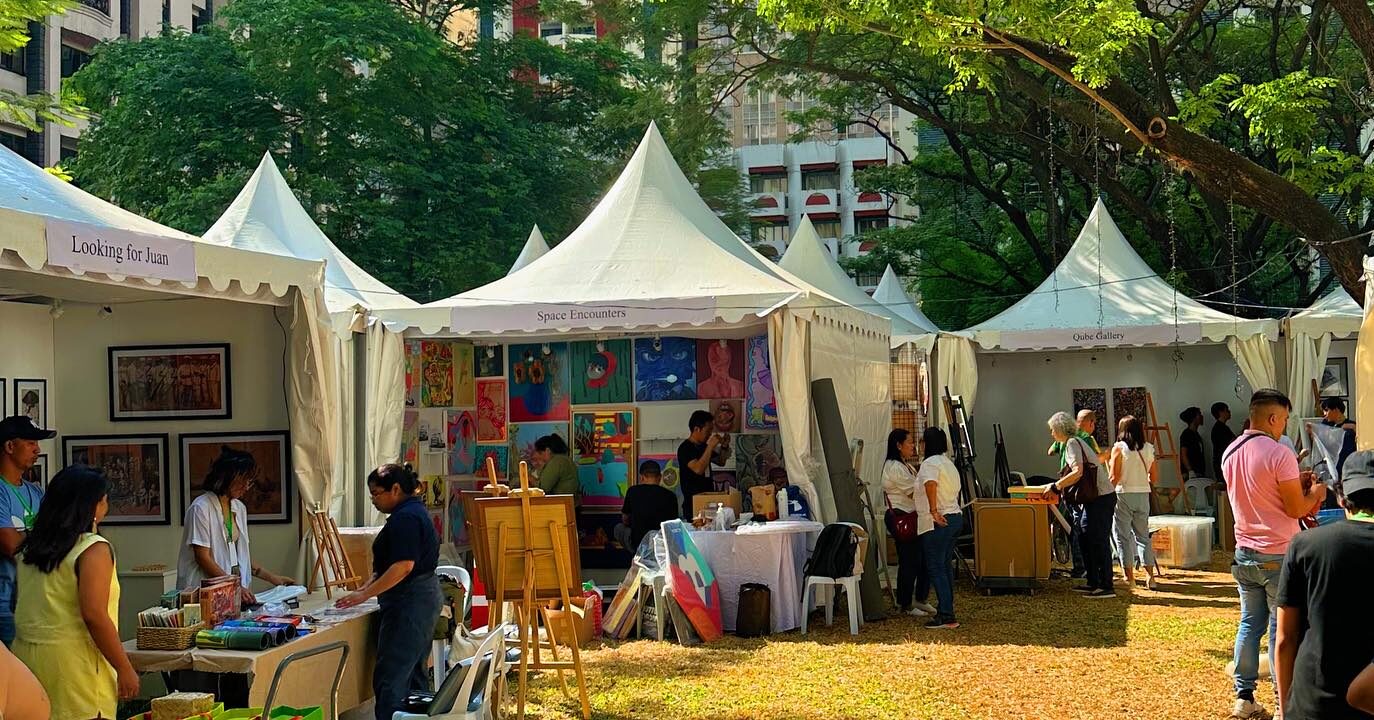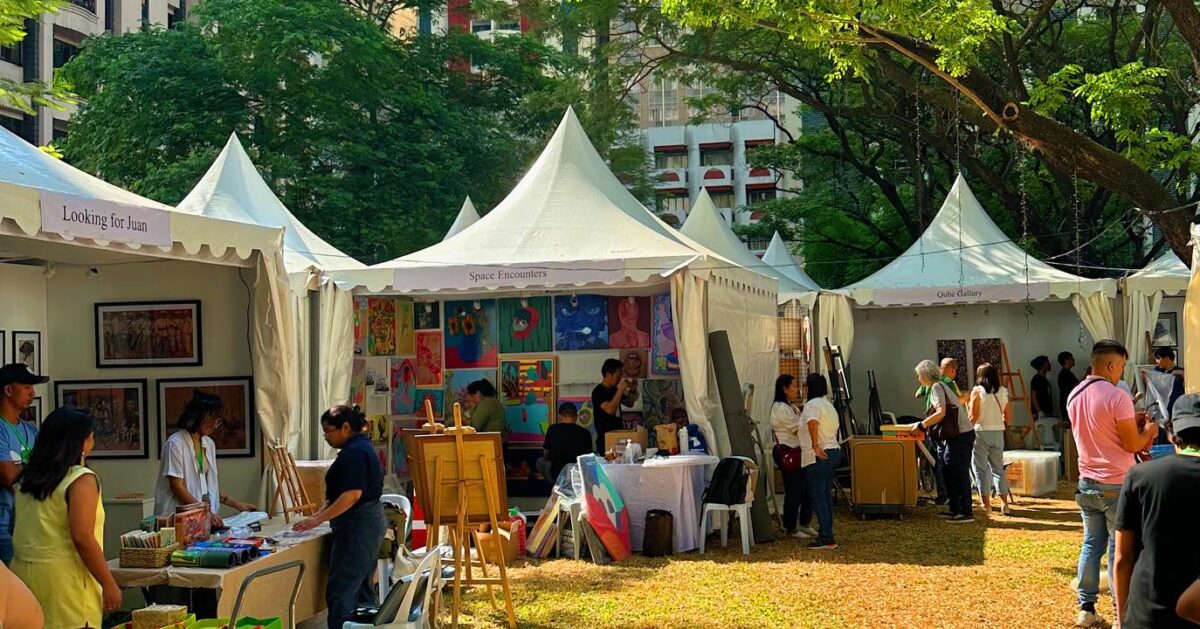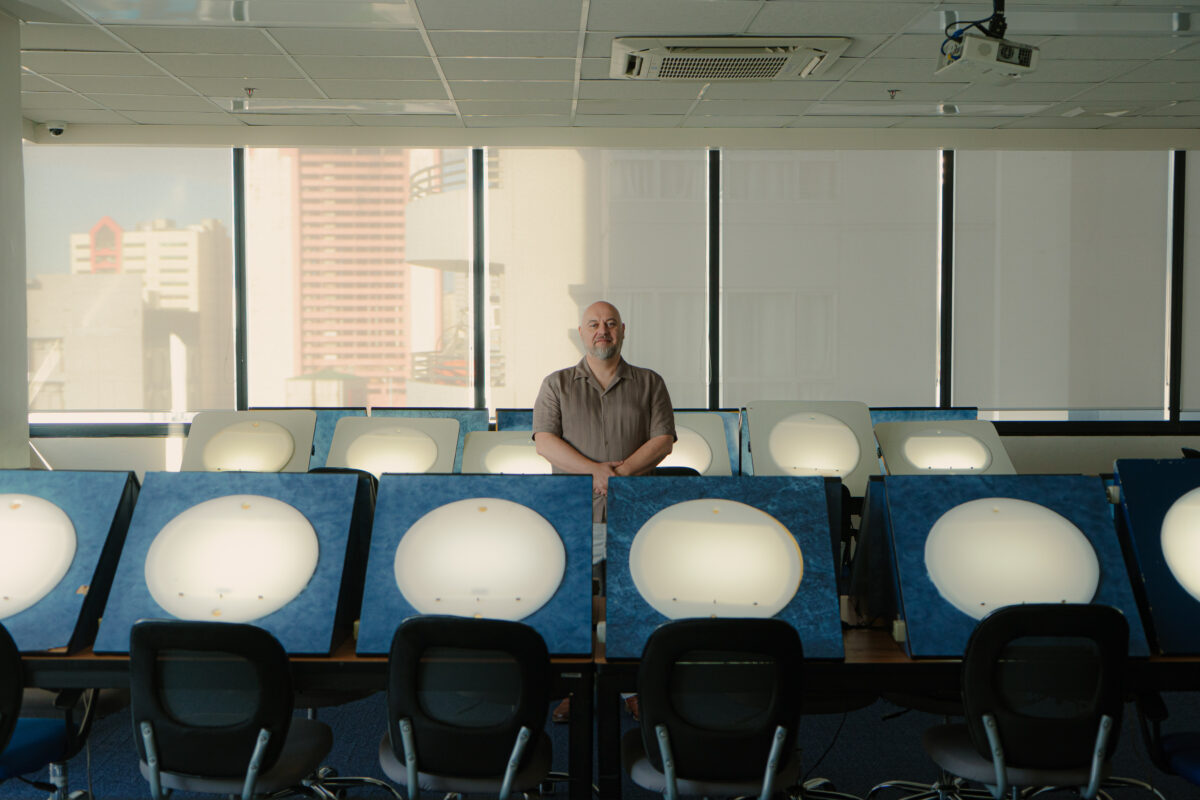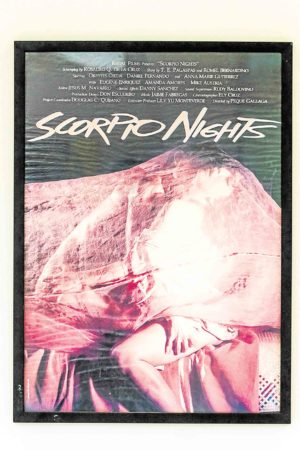
If Vic Delotavo’s name rings a bell at all, it’s probably because he shares it with his better-known brother, the acclaimed social realist painter Antipas.
Older by nine years, Vic actually started his career in art earlier, but while Antipas chose the more established medium of oil on canvas, Vic poured his (he)art into the ephemeral—first as a magazine illustrator, and later as perhaps the country’s most prolific designer of movie posters.
The elder Delotavo finally gets his due in the ongoing exhibit, “Vic Delotavo: Posters for Philippine Cinema,” which runs until June 9 at the Jorge B. Vargas Museum in UP Diliman.
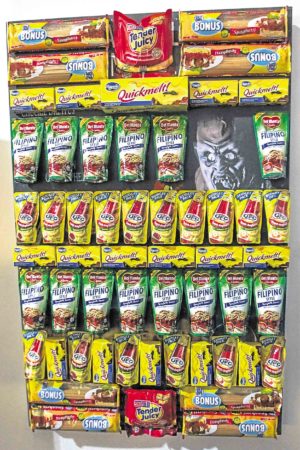
Comprehensive survey
The exhibit is a comprehensive survey of Delotavo’s graphic design sensibility as expressed in posters for such film classics as Peque Gallaga’s “Oro, Plata, Mata” (1982), “Scorpio Nights” (1985) and Ishmael Bernal’s “Gamitin Mo Ako” (1985), as well as lesser-known works from the “bold” genre of exploitation films such as “Room 69,” “Kirot,” “Bomba Queen,” and “Hubad na Gubat.”
Running alongside Delotavo’s posters is a complementary exhibit called “Reinterpreting Vic Delotavo’s Posters for Philippine Cinema,” selected posters as reimagined and remixed by contemporary Filipino artists Dranreb Belleza, Valeria Cavestany, Carlos Celdran, Patrick Cruz, Robert Langenegger, Romeo Lee, Jason Oliveria, Raul Rodriguez, Gerardo Tan, Jay Yao, Cecile Zamora and—under a nom de plume—John Lloyd Cruz.
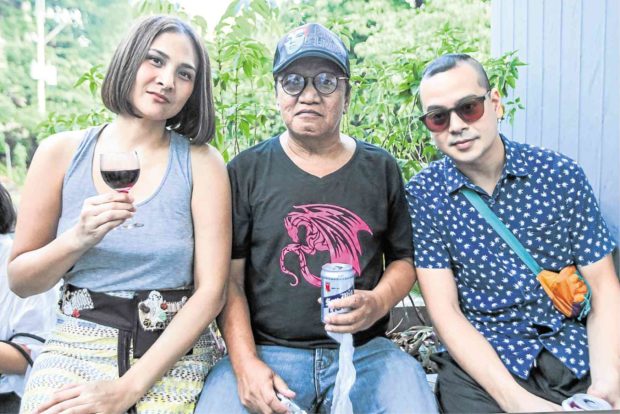
High and low art
The project is a mashup of high and low art typical of its originator, the quirky art space Archivo 1984 and its proprietor, Juan Martin “Marti” Magsanoc.
Unlike most “white wall” galleries, Archivo’s sensibilities lean toward uncovering hidden or lost aspects of recent Filipino pop culture, from cult cinema to OPM (Original Pilipino Music) obscurities to underappreciated media such as film posters and pulp publications.
“I’m an archivist at heart,” says Magsanoc, the son of Inquirer’s late editor in chief Letty Jimenez Magsanoc.
“I started collecting at a young age,” he says. “We are called Archivo 1984 because that’s the year I started collecting. Because of my tita Inday Badiday (Lourdes Jimenez Carvajal), I used to watch a lot of old movies, so I started collecting old movie posters, OPM records, books and magazines—anything Filipiniana. My mother also influenced me. She was an art critic. In the 1970s she wrote about David Medalla and [Oscar] Zalameda for the old Panorama.”
Magsanoc was head of the National Film Archive for a few years before opening Archivo 1984 on Chino Roces Avenue in Makati.
“I realized that archiving is not just about collecting, but making it accessible to the public,” he says.
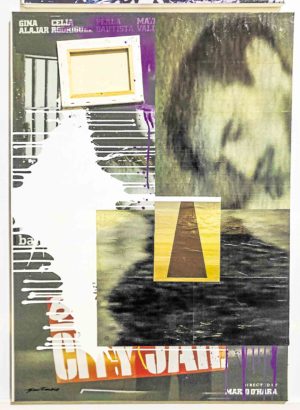
Hidden corners
This sensibility has informed Archivo’s predilection for illuminating hidden corners of Filipino popular culture, not only through art exhibits, but also regular film screenings and other events.
“I’ve been looking for ‘lost’ Pinoy films for the past few years,” Magsanoc says. “When I say ‘lost’ I mean there is no known existing copy in any format, whether print or negative or video transfer.”
Finding one is a thrill, such us discovering a video copy of Gil Portes’ fabled 1979 Pinoy rock documentary “Pabonggahan,” featuring the Juan de la Cruz band and Sampaguita, which he hopes to screen soon at Archivo 1984’s main gallery at the La Fuerza compound on Chino Roces Avenue in Makati. (Archivo 1984 also has a satellite store at the Cultural Center of the Philippines.)
“In a way, I also want to elevate popular art,” he says. “A lot of people still think Pilipino films are baduy. By showing them in a different venue which is a gallery, at least the art collecting crowd can get to appreciate them.”
One of his grails is “Balatkayo,” featuring Pinoy artists Freddie Aguilar, Coritha and Sampaguita, which he knows about because he has the original soundtrack on vinyl.

Dream exhibit
“My dream exhibit would be a complete history of OPM from Maria Carpena’s first album to the last album that was released on vinyl,” he says. He is just a few albums away, he adds, but the prices of original Filipino LPs have skyrocketed in recent years.
Archivo 1984 also showcases contemporary art, but even here, Magsanoc prefers to stay away from the so-called “auction stars” and highlight the works of less-publicized artists.
In a way, Magsanoc sees Vic Delotavo, now in his 70s, as a kindred spirit.
“He’s a cinephile,” he says of the artist. “His obsession started with Gerry de Leon—he’s one of only three people I know who’s actually seen the holy grail of Philippine cinema, which is de Leon’s ‘Daigdig ng mga Api.’ He started collecting movie flyers and movie posters, then in the 1980s he started making them.”
Of course, in the age of digital movie-making and social media marketing, the film poster as a commercial art form has all but vanished. Luckily, there are places like Archivo 1984 where they can live on.
“Vic Delotavo: Posters for Philippine Cinema” runs until June 9 at Jorge B. Vargas Museum, University of the Philippines campus, Diliman, Quezon City.
Visit www.facebook.com/vargasmuseum.upd.
